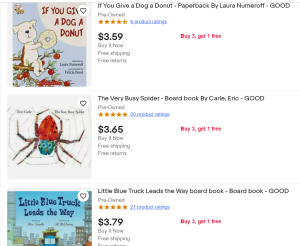Amazon’s “Fair Pricing” Policy Creates Stranglehold For Sellers And Inflated Prices For Buyers
During the COVID-19 Pandemic, Amazon suspended the shipment of non-essential items. As a result, consumers were forced to rely on 3rd party sellers to purchase video games, clothing, gimbals, paint, books, puzzles, and other items so they could stay sane while staying home. While 3rd party sellers are an integral aspect of Amazon’s business, many argue that the company often shows contempt for these retailers.
An independent investigation carried out by Hagen Berman’s legal team and expert antitrust attorneys discovered that Amazon may have violated federal antitrust price-fixing laws while causing consumers everywhere to pay artificially increased prices for products purchased at online retail sites. A class-action lawsuit has been filed against Amazon for allegedly driving up prices for online purchases made from other retailers.
And, it has everything to do with Amazon’s desire to control the marketplace by twisting the arms of its third-party sellers. What is Amazon’s Fair Pricing Policy? How does it impact the prices you paid at eBay, Walmart.com, and Etsy?
Amazon’s Fair Pricing Policy
Amazon’s Fair Pricing policy bars 3rd party sellers from listing their products at lower prices on other websites. If a seller is selling a bottle of perfume on Amazon for $29.99, they can not sell the same item on eBay for $29.99.
The policy may lead to inflated prices across the board. This rule is not only hurting sellers but also buyers. Amazon’s Marketplace tends to be the most expensive in terms of transactional and monthly fees.
As an example, eBay fees are significantly cheaper than Amazon. Amazon’s sellers who intend to sell more than 40 items a month will need to upgrade to a Professional Plan which costs around $40 a month.
Then, they’ll face various fees for each transaction. Depending on the category, the fees will range between 8% and 15%. With books, the seller pays 15% of the total cost and a $1.80 closing fee. Furthermore, there is the $40 a month subscription fee to cover.
The fees elsewhere are cheaper. Selling on Walmart.com does not require a monthly fee. eBay’s final value fees may be as little as 2% or as high as 12%.
How The Policy Hurt Consumers
Amazon’s Fair Pricing Policy intends to keep prices low on its website. However, it may have unintended consequences. Since Amazon fees are much higher, sellers must charge consumers more on Amazon to make a profit.
On eBay, they may be able to slice off 1, 2, or even 3 dollars since the fees are lower. When selling on their official website, they can avoid most fees so the prices should be much lower.
Under Amazon’s Fair Pricing policy, this was not possible. Sellers are afraid to price their items cheaper on eBay, Walmart.com, or their official website since doing so could lead to an Amazon account suspension.
So, Amazon’s policies could have widespread consequences for buyers and sellers. In March of 2019, Amazon changed its policy to broaden the scope. It also confirmed that it would no longer prohibit its third-party sellers from listing their products on other sites for lower than they do on Amazon.
After facing threats of a Federal Trade Commission investigation, Amazon withdrew its “price parity” provision and changed the wording while leaving a warning for sellers.
Damage Was Likely Already Done
While the wording of the policy was changed, the damage was likely already done. It is alleged that because of Amazon’s anticompetitive conduct, some consumers were forced to pay more for products then they would have if Amazon had allowed its 3rd party sellers to engage in price competition outside of the Amazon Marketplace.
In the new Class Action Complaint, Amazon is being accused of causing Class members to suffer overcharge damages. Additional information about the Amazon.com Antitrust class-action lawsuit can be found here.



